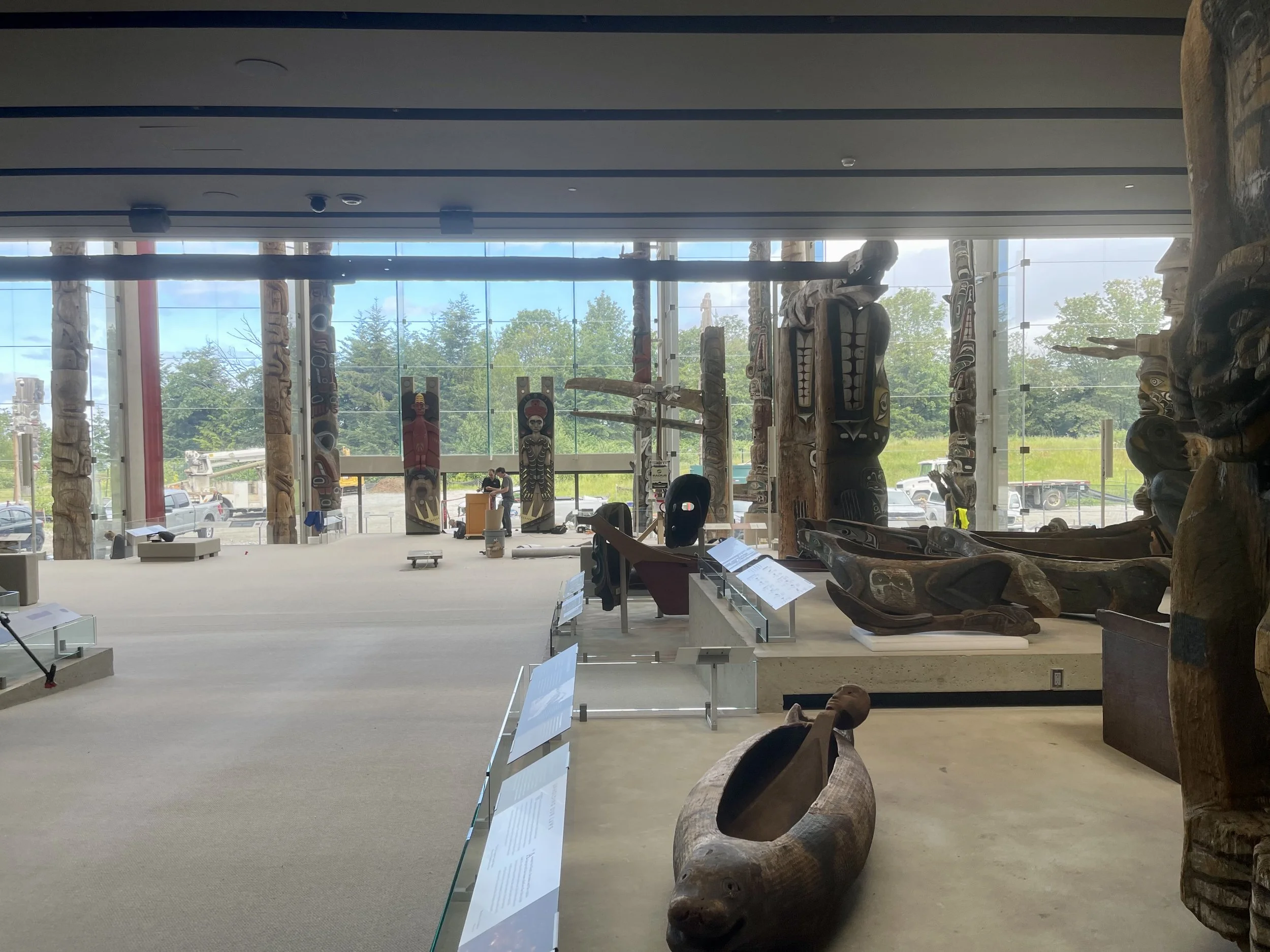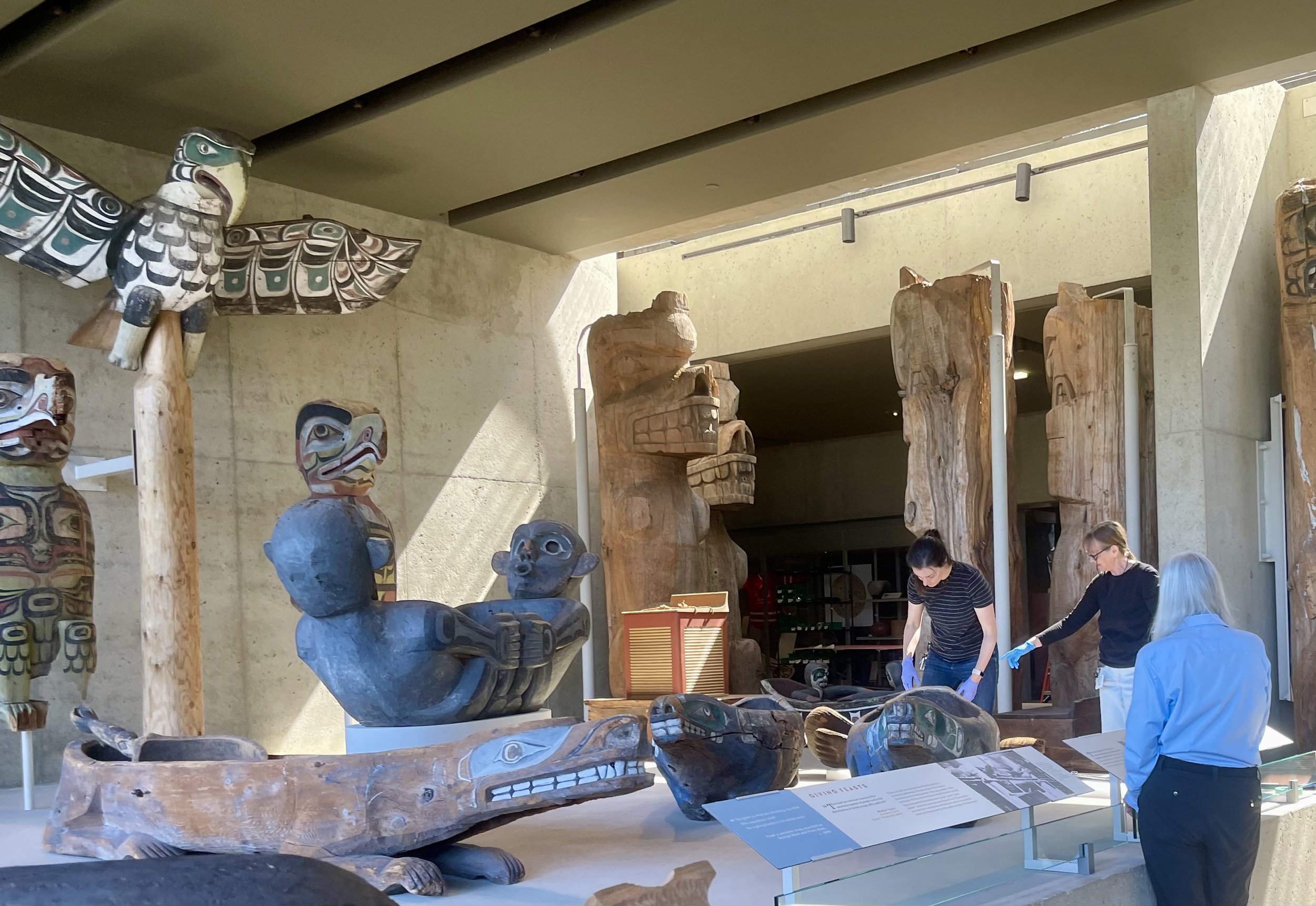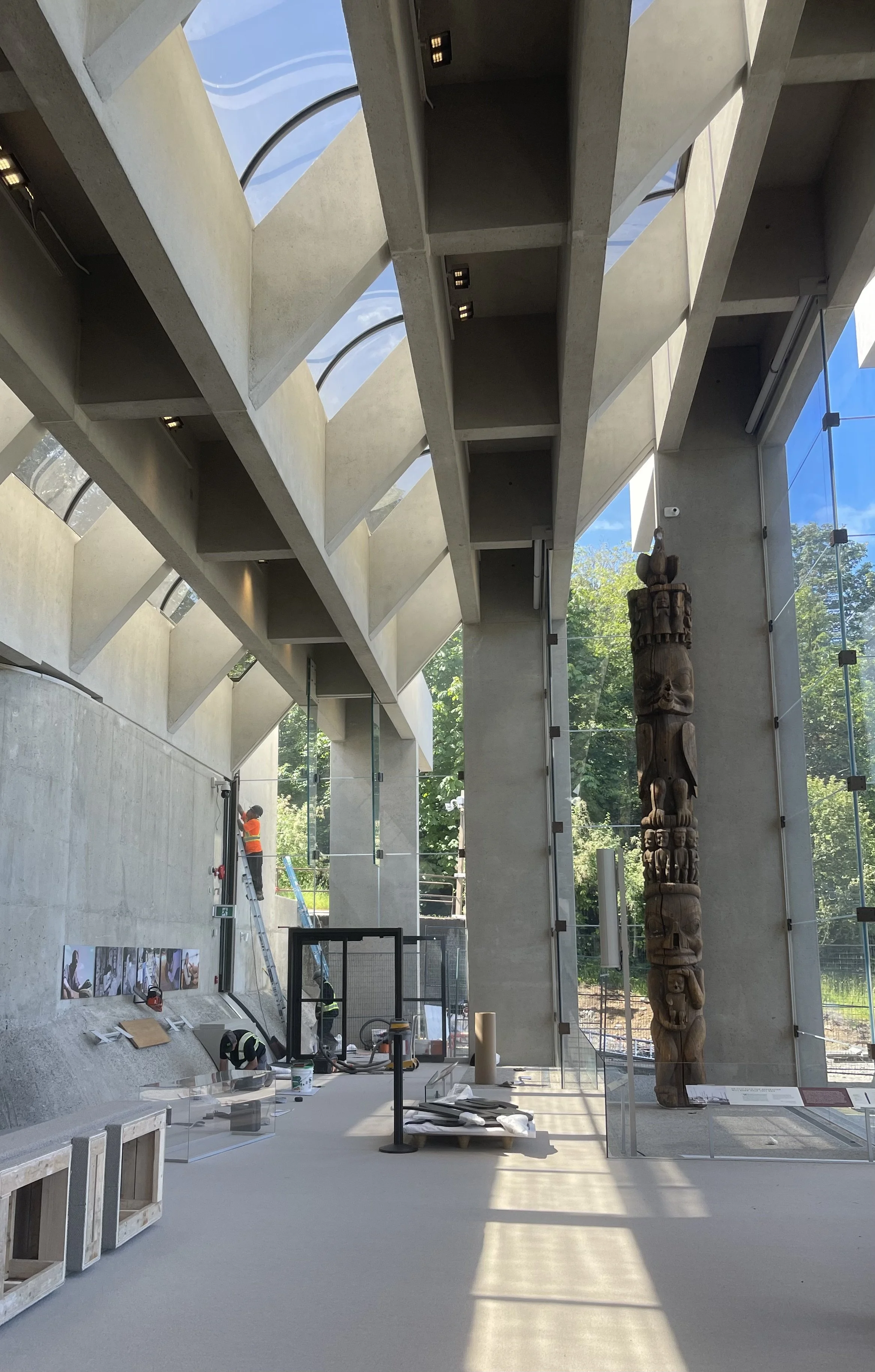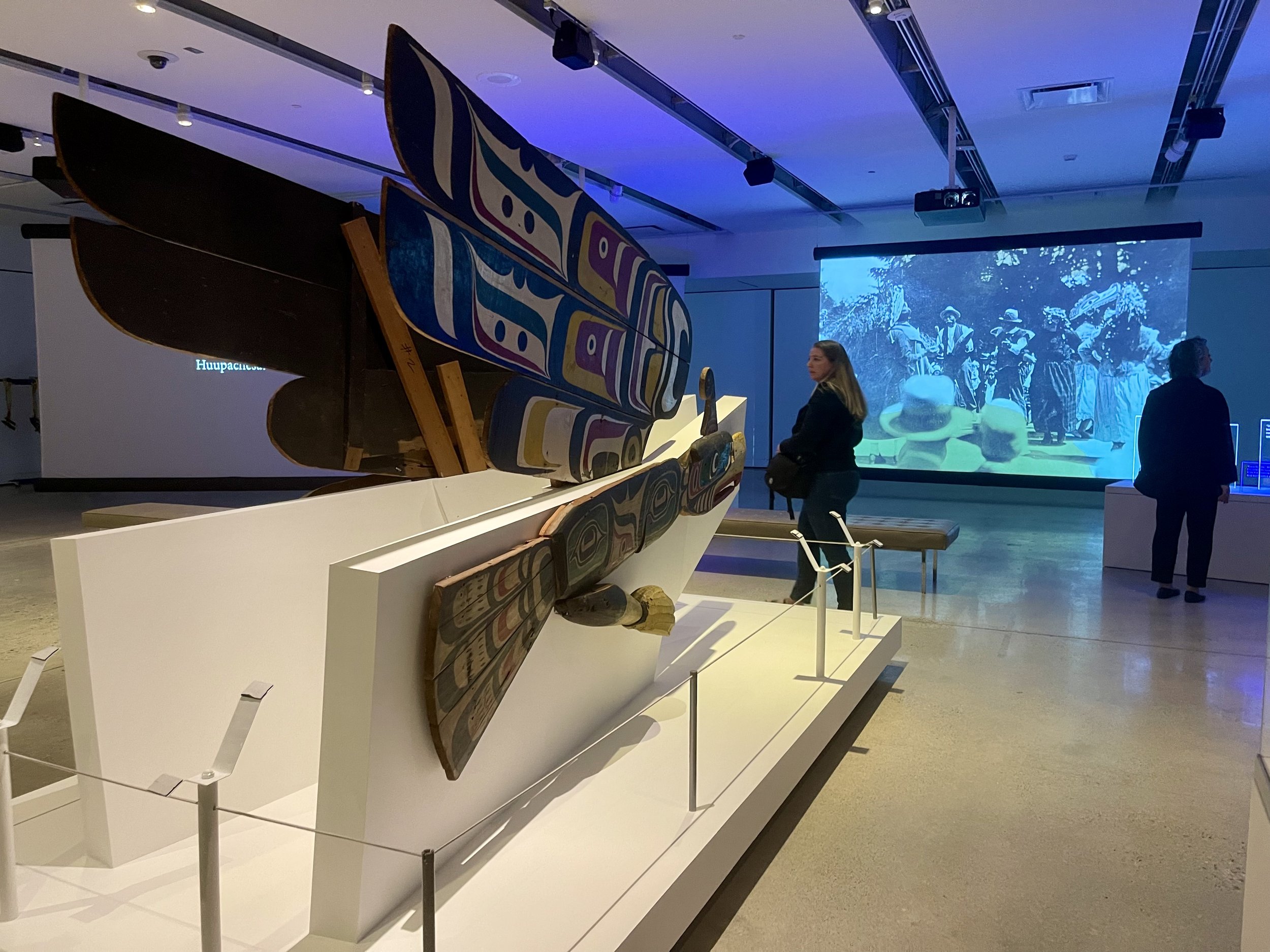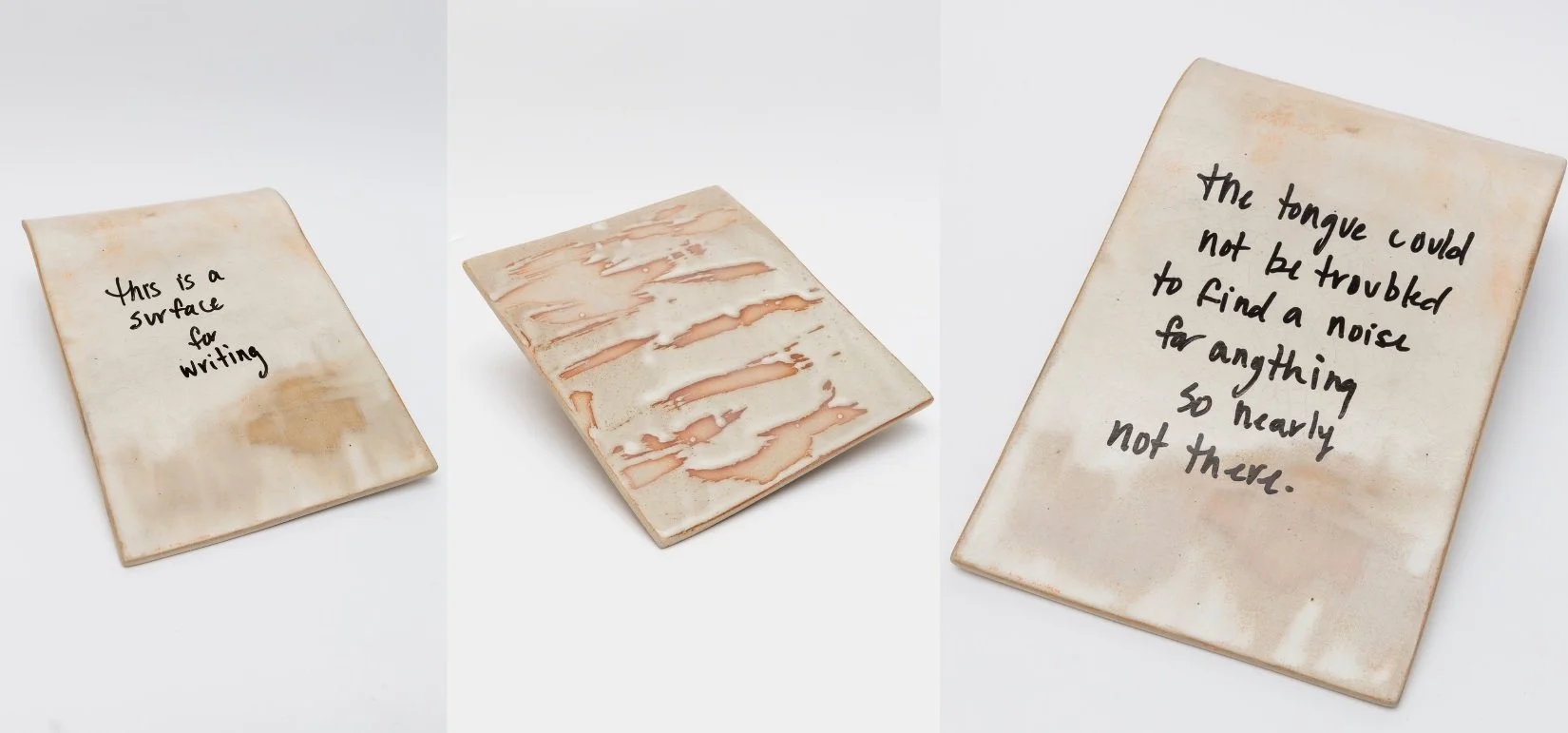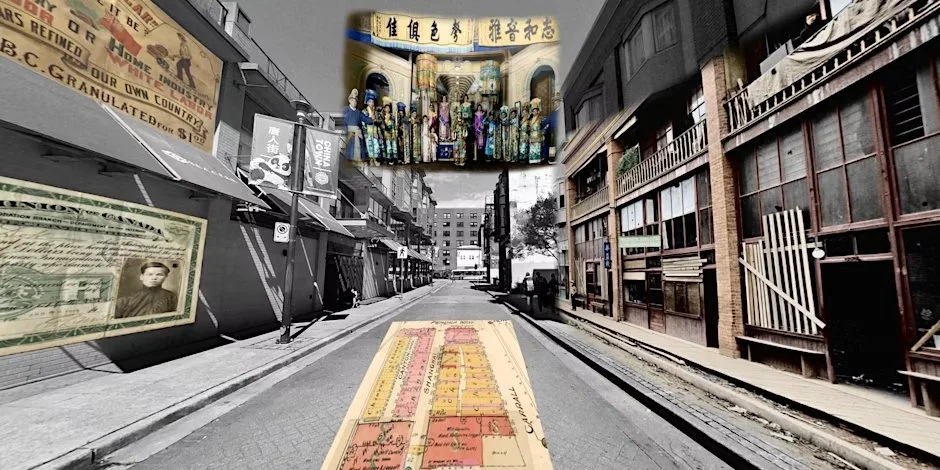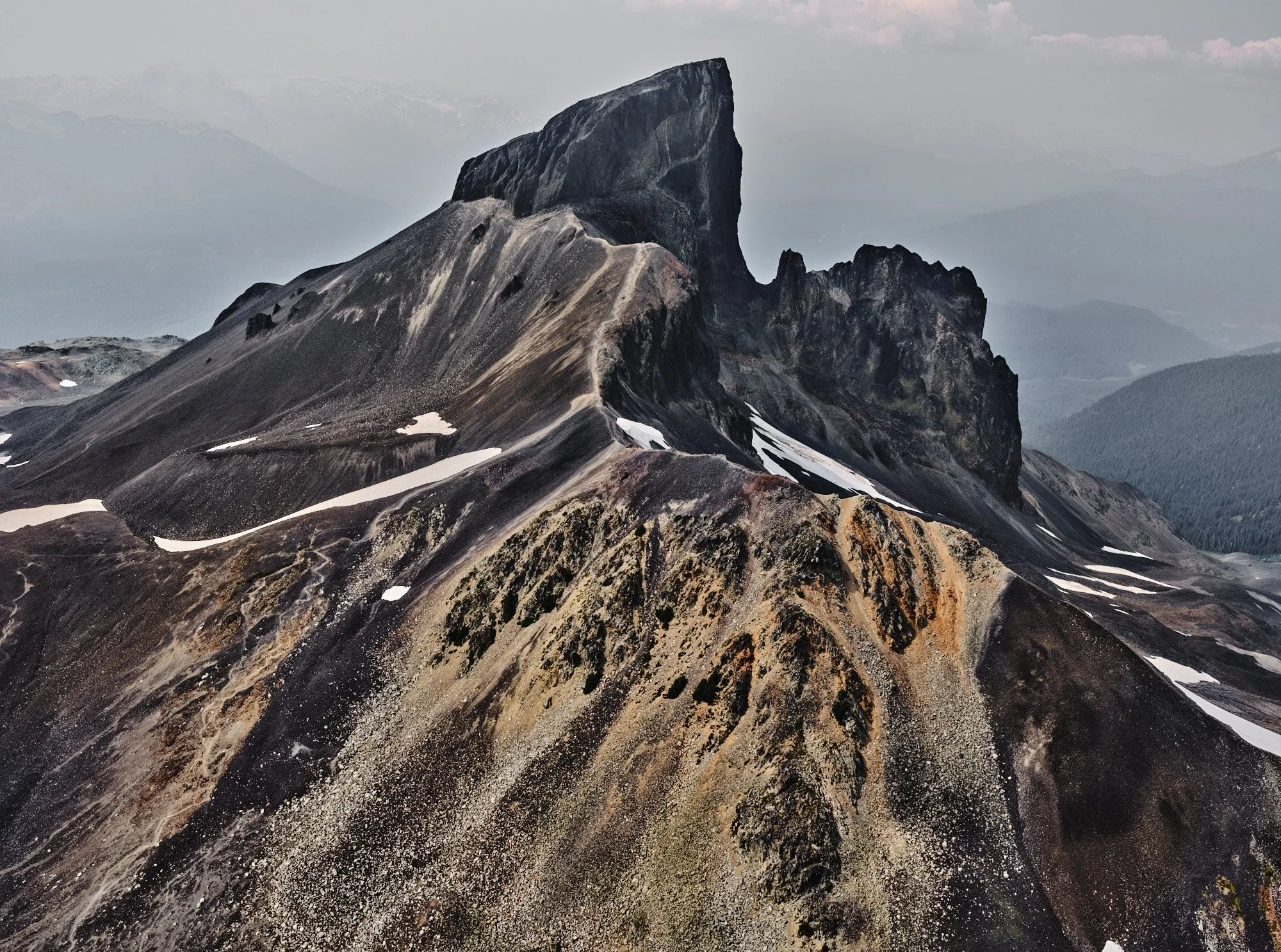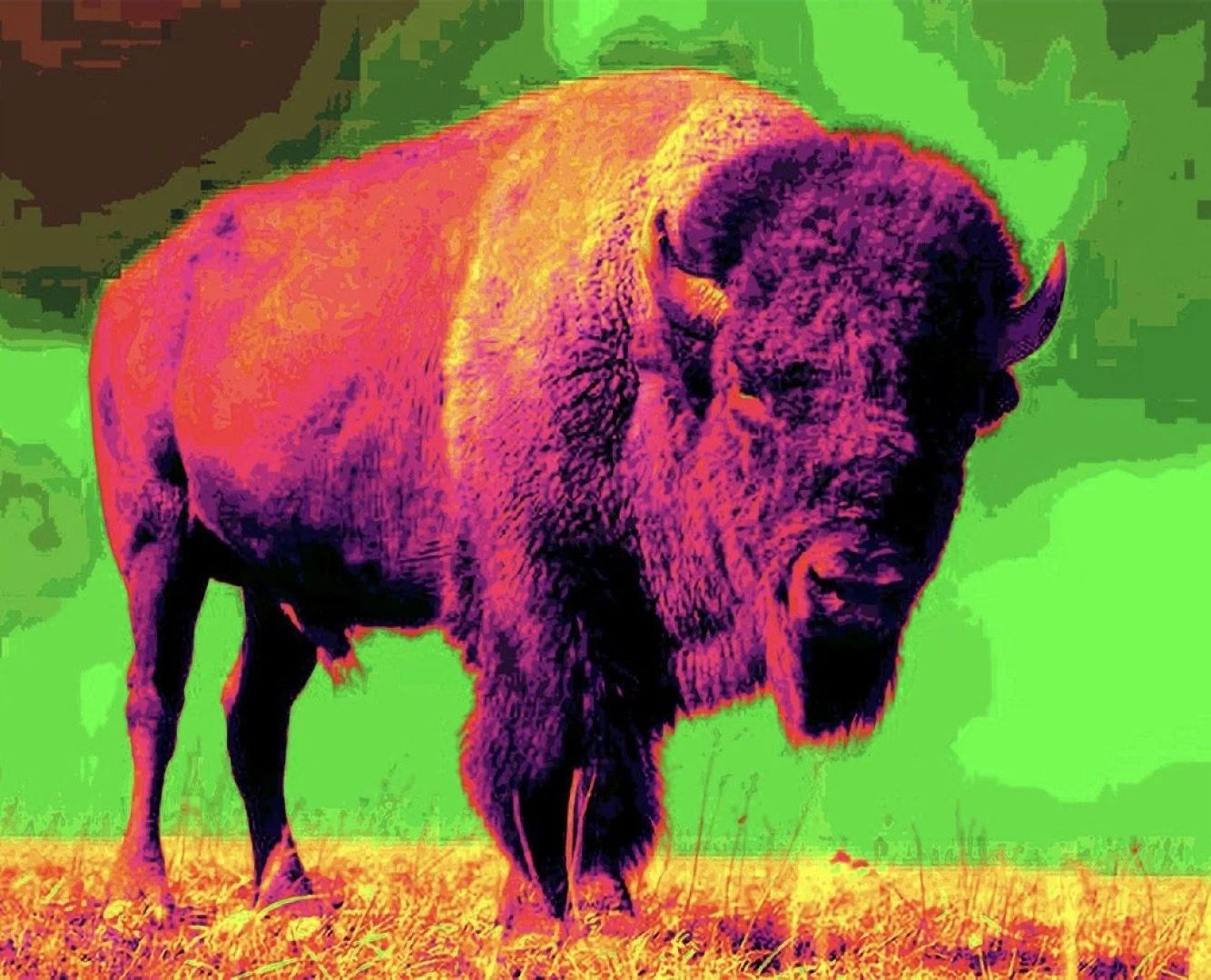UBC Museum of Anthropology reopens after completion of challenging $30.5-million seismic upgrades
Years in the making, project led by Nick Milkovich Architects Inc. includes full rebuild of the glass-panelled Great Hall, plus the new permanent Pacific Northwest Galleries
A view of the UBC Museum of Anthropology’s Great Hall ahead of its reopening. Photo by Emily Lyth
CONSTRUCTION CREWS WERE hard at work putting finishing touches on UBC’s Museum of Anthropology two days before its grand reopening, which marks the end of an 18-month closure for much-needed seismic upgrades to the Great Hall.
The Vancouver landmark, designed in 1976 by late B.C. architect Arthur Erickson, was determined by UBC in 2017 to be at a high level of seismic risk, due mainly to the Great Hall’s iconic glass curtain wall. Two years later, the university decided that a full rebuild of the hall would be required in order to properly preserve the structure in the event of an earthquake. Nick Milkovich of Nick Milkovich Architects Inc., one of Erickson’s most long-standing collaborators, led the $30.5-million project; he had worked on the original museum under the influential architect’s leadership.
Seismic base isolators have now been installed underneath the museum’s main floor slab, which are designed to separate the building’s foundation from the structure above it, minimizing any potential damage from tremors. The upgrade marks a milestone in Canadian architecture; it’s only the second time the rare technology has been installed in the country, and the first time it has been implemented on a new building.
Susan Rowley, director of the UBC Museum of Anthropology, shared during a media tour of the space on June 11 that Indigenous voices will remain at the forefront of the revamped museum, which is set to officially open to the public on June 13 at 5 pm.
“There are a variety of new themes that are presented throughout the space with the Indigenous advisory committee,” said Rowley, “and those are to foreground Indigenous ways of knowing the world, looking at Indigenous peoples as living, vibrant, sovereign cultures. So the themes that you’ll see throughout the space when you get a chance to read the labels, once they’re fully installed, will be the themes of family, connectivity, diversity, wealth—and that’s not wealth as in monetary wealth. It’s the wealth of all of our history, and of being part of the land.”
UBC Museum of Anthropology director Susan Rowley (right) watches on as a crew installs the finishing touches on an exhibition at the entrance of the Great Hall. Photo by Emily Lyth
The Great Hall closed to the public at the end of 2020, following an extensive process to relocate the massive carvings it housed. Indigenous families and communities whose objects are displayed in the museum helped determine protocols on how to move, temporarily store, and reinstall each work with respect and care. By January 2023, the entire museum had closed to accelerate the rebuild.
Over the last month, the carvings were all meticulously reinstated throughout the Great Hall, where the light from the remarkable five-storey-high windowed atrium can highlight their details once again. Installation of new laminate glass panes, a stronger option compared to the old tempered-glass design, began last December—each pane measuring 11.5 metres tall and weighing 1,180 kilograms. During the tour, workers were on ladders hosing off the exterior of the now-complete window wall, giving it a glimmering, squeaky-clean finish.
“This building is particularly challenging to deal with because traditionally, in seismic, you would add brace structure,” said Jay Hiscox, director of project services at UBC Facilities, during the tour. “And you can see the building is so uniquely singular in its approach—concrete and glass only—that we had to find an approach to remedy the building that wouldn’t leave that behind, and would be meaningful. It is, in fact, poetry of architecture—it’s a very eloquent expression. But really, really challenging as a project.”
Hiscox went on to explain that although the reconstructed Great Hall looks identical to its ’70s predecessor, “what you don’t see is that the performance goals are lightyears from what was there previously.”
A worker placing a final touch on the Museum of Anthropology’s Great Hall. Photo by Emily Lyth
As visitors step inside the space that leads into the Great Hall, they bear witness to a new permanent exhibition dubbed the Pacific Northwest Galleries, reimagined with the input of an Indigenous advisory committee. A canoe-frame installation near the entrance features paddles from 15 different Indigenous nations along the Pacific Northwest Coast, dating from the 19th century to 2023. Rowley noted that the paddles were a perfect representation of the museum’s focus on connectivity.
“They invite our visitors to be active, to be participants, to come on a journey as they travel through the museum,” Rowley explained. The paddles help emphasize “that they’re not just passive walkers through this space, but we hope that they will open their hearts and open their minds. That’s one of our teachings that have been shared from Musqueam with us, is that they will do that, and then go away and think about things in a different way. That’s part of the hope for this space.”
Elsewhere in the museum, two temporary feature exhibitions are being unveiled. In The Audain Gallery, To Be Seen, To Be Heard: First Nations in Public Spaces, 1900–1965 offers an immersive, historic picture of Indigenous people representing their culture in urban spaces, particularly during colonial events in B.C. cities, such as royal visits and Dominion Day celebrations.
Curated by Karen Duffek and Ts'msyan/Haida scholar Marcia Crosby, the exhibition features three main components: projected archival film and imagery from 1900 to 1960, a 70-minute audio compilation of 16 different First Nations people expressing their thoughts on the media shown, and a large assembly of items from the time period which includes robes, headdresses, basketry, and more.
“You’ll notice that the objects and belongings are all facing the screens and the images, because it’s like they are witnesses of this history of which they were a part,” noted Duffek during the tour.
To Be Seen, To Be Heard: First Nations in Public Spaces, 1900–1965. Photo by Emily Lyth
Over in the O’Brian Gallery, Māori artist Lisa Reihana’s 32-minute digital animation called in Pursuit of Venus [infected] will be projected in a dark room. Spanning 17 metres in length, the work weaves together four video channels and eight audio channels to expose the oppression and violence that’s lacking from Les Sauvages de la Mer Pacifique, a French Neoclassical wallpaper which portrays utopian colonial scenes.
The exhibition was put together by Damara Jacobs-Petersen, the Museum of Anthropology’s curator of Indigenous programming, who is from the Skwxú7mesh (Squamish) Nation. She noted that the piece is an opportunity for more conversations among Indigenous peoples of the Pacific, which she and Reihana had a chance to experience in putting together the exhibition.
“The common ground we found is that we’re not just rooted in our territories of the physical land that we’re from,” said Jacobs-Petersen, “but we’re also very much connected to the water that surrounds us. We’re kin—we talk to each other as if we are family. There has been, in a very short time, a really close bond developed. So I am super excited that we can actualize her vision.”
Starting Friday, regular museum hours will be in effect. Guests can visit from 10 am to 5 pm Monday through Sunday, and can stay until 9 pm on Thursdays. MOA’s collection of more than 50,000 cultural objects and artworks from across Asia, Africa, Oceania, Europe, and the Americas will be back on display, including the Great Hall’s stunning carved totem poles and figures.
“In the sort of scope of museums, we’re a pretty young museum,” Rowley said. “We were only founded in the late 1940s. And right from the time we opened our doors, Musqueam has very generously stepped forward and asked us to question who we are, why we do the things we do, and how we do them—and to rethink those things. That relationship continues, and that’s one of the things that’s really important to be thinking about museums, about people, about relationships, and about stories.” ![]()



